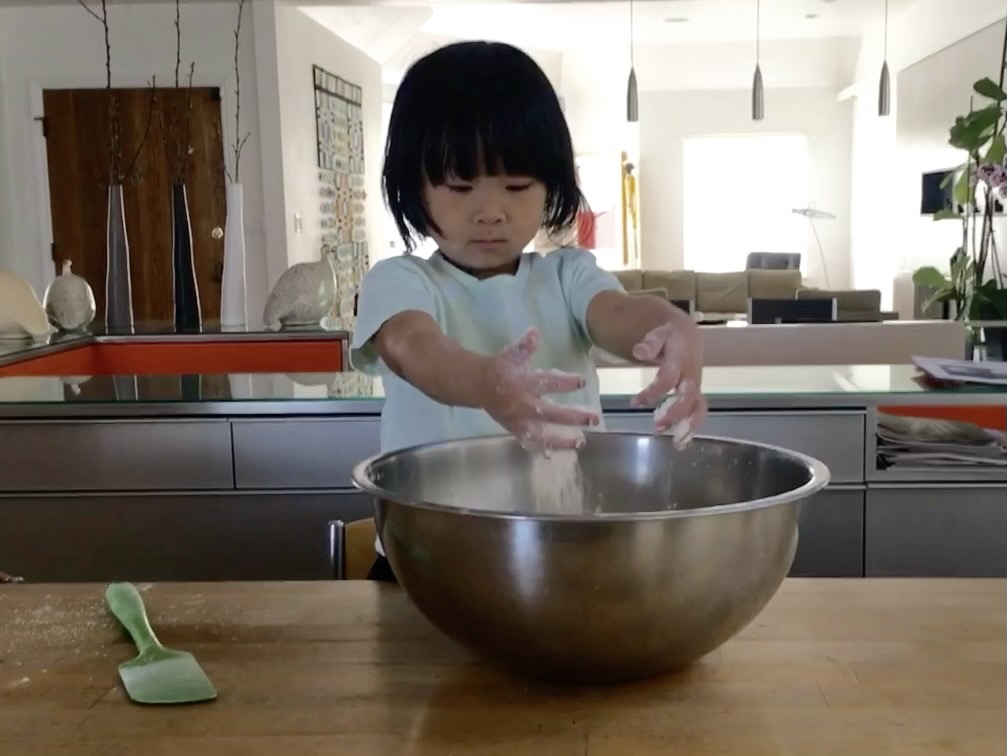How to Make Irish Scones for St. Patrick’s Day
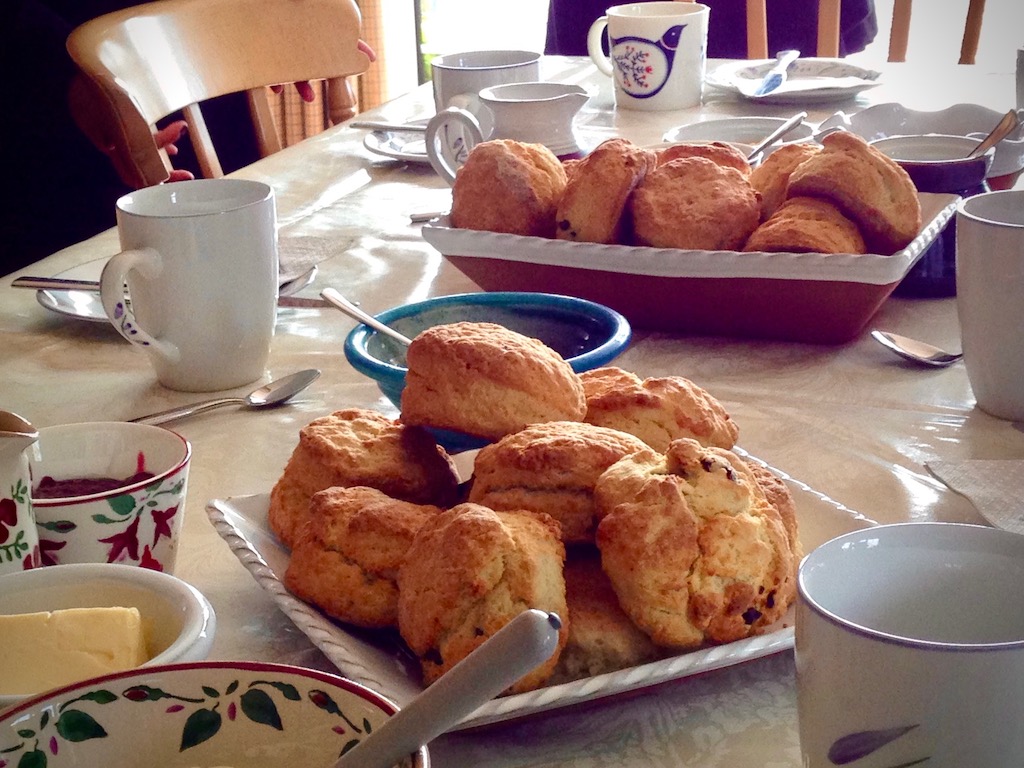
Growing up in Hawaii, I knew little about Ireland and St. Patrick’s Day, except that if you didn’t wear green, you would get pinched at school. Decades later, my little boutique PR shop came to represent Kerrygold Irish butter and cheeses in the U.S. And thus began my love of this beautiful country, its people, and its food.
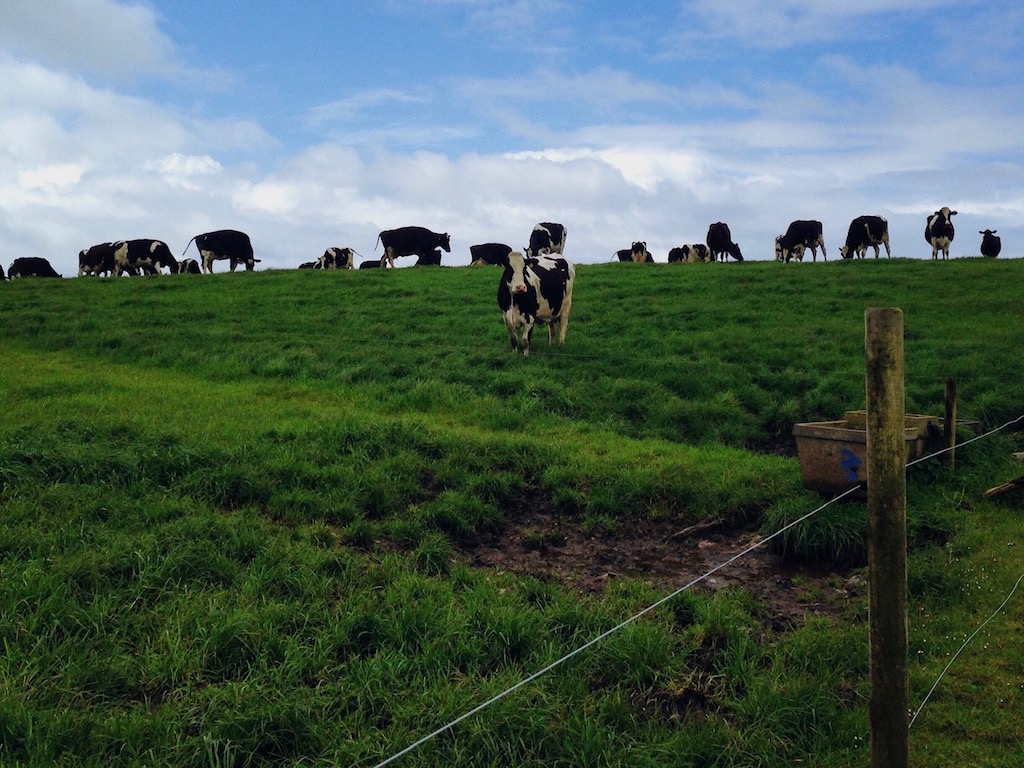
On trips to Ireland with media guests, we visited small family farms that provided milk for Kerrygold dairy products. Invariably, the gracious family would invite us for tea and freshly-baked Irish scones.
Even preschool kids can make easy Irish Soda Bread for St. Patrick’s Day.
According to the website, Go to Ireland, “The main difference between Irish and English scones lies in their texture and ingredients. Irish scones tend to be softer and slightly denser, often made with buttermilk, which gives them a distinctive texture.”
Why not bake up some Irish scones for St. Patrick’s Day? This is a quick recipe that kids can help to make. Alternatively, try your hand at Irish Soda Bread, another easy recipe.
Irish Scones with Butter and Jam
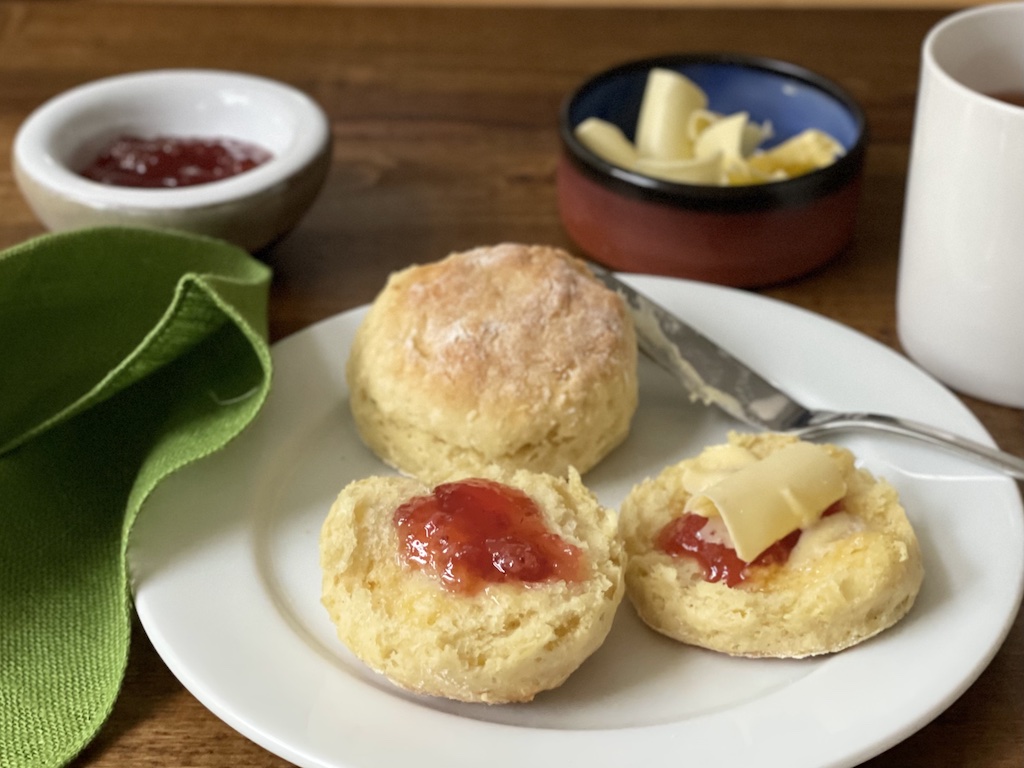
Ingredients
- 3 cups flour, plus extra for dusting
- 1 teaspoon salt
- 1 teaspoon baking soda
- 1 teaspoon superfine sugar or regular granulated sugar
- 3 tablespoons Kerrygold butter, chilled and diced
- 1 cup buttermilk
- 1 egg, beaten
- Kerrygold butter curls and blackberry or strawberry jam, to serve
How to Make It
Heat oven to 425 degrees F.
Sift together flour, salt, baking soda, and sugar into a bowl. Add butter and using fingertips, rub in the butter until the butter bits are evenly dispersed into the flour and the mixture resembles fine bread crumbs.
Next, make a well in the center and pour in the buttermilk and beaten egg. Gently and quickly stir the liquid into the flour mixture until all the flour is incorporated. Dough will be soft and a little sticky.
Lightly flour your work surface. Turn the dough out onto it and pat into a circle about 1 inch thick. You may need to sprinkle a little flour on top of the dough if it’s too sticky. Cut into triangles with a sharp knife or cut out rounds with a 2-inch biscuit cutter. If dough sticks, dip the knife or biscuit cutter into flour each time before cutting.
Arrange the scones on a parchment-lined baking sheet or a non-stick baking sheet. Bake 12 to 15 minutes, until scones are well risen and golden brown.
Cool at least 10 minutes on a wire rack, then serve with butter curls and jam.
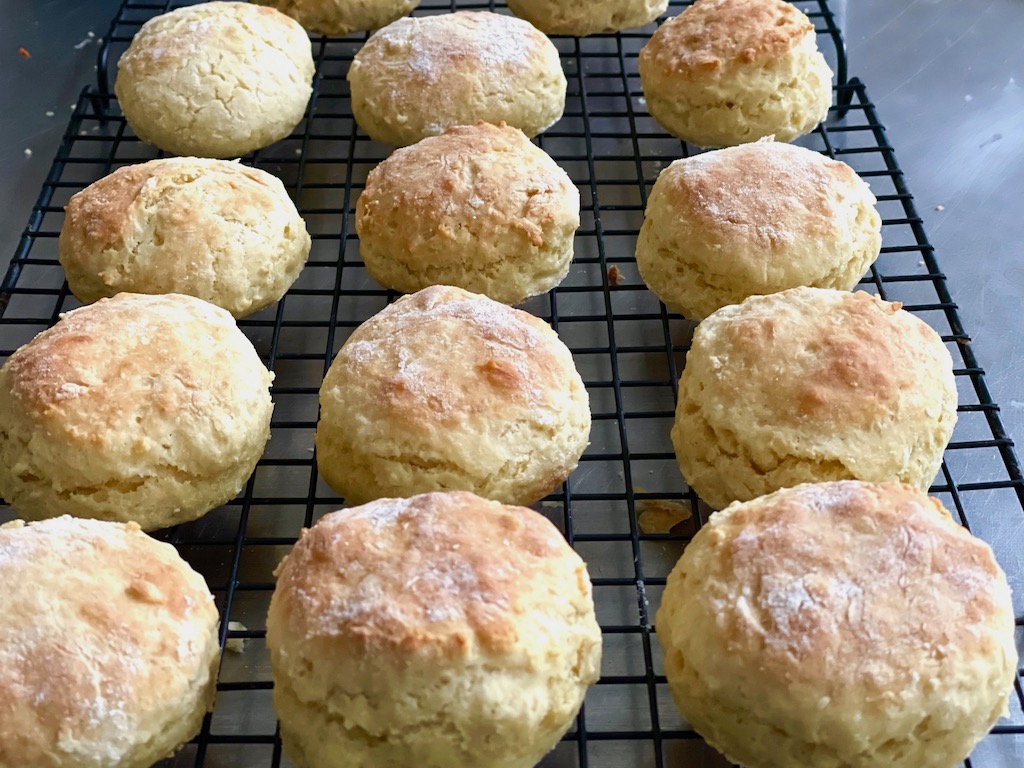
Makes about 14 (2-inch round) scones.
Recipe adapted from the Kerrygold Cookbook, produced by the Irish Dairy Board, c. 2013.
Notes
- If you don’t have buttermilk, put 1 tablespoon of lemon juice or distilled white vinegar into a measuring cup. Fill with milk to make 1 cup. Let stand 5 minutes before using.
- If you don’t have a tool to make butter curls, use a vegetable peeler and run it across a block of cold butter. (If the curls crack, let the butter warm up a few minutes and try again.)
Irish Butter for Irish Scones
I used to think of butter as a generic product. However, having worked with a premium butter brand, I’ve learned otherwise from first-hand experience. From competitive taste tests and performance tests, I’ve found that Kerrygold butter, made with milk from grass-fed cows, tastes and performs better.
One time, a friend who is a pastry chef and cookbook author, was assigned the same pound cake recipe as I was, both of us being volunteers for a culinary event. I have none of her talents, but in this particular instance, the butter I used made my cake taste better, according to several food-savvy guests.
Another time, my daughter-in-law used my simple recipe for a Boursin-like spread. When she was done, she wondered why hers didn’t taste as good as mine; we attributed the difference to the butter. She hadn’t used Kerrygold.
The Joys of Visiting Ireland

Each time I visit, I’m impressed once again by Ireland’s scenic beauty–in the countryside, in the towns, and by the sea. There are wonderful manor houses where you can stay, castles to visit, and extraordinary cuisines to sample from Irish chefs who embrace the farm-to-table ethos and glorify the best ingredients the country has to offer.
Learn more about visiting Ireland.
If Ireland isn’t in your travel plans, make Irish scones as part of your staycation. You’ll find more ways to plan a “travel” staycation with the grandkids in my updated post.
Sign Up!
Don’t forget to sign up for my email newsletter. Every Wednesday, I’ll give you a new idea for an activity or insight to nurture the little ones in your life.
